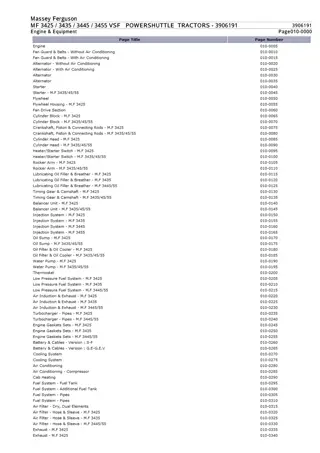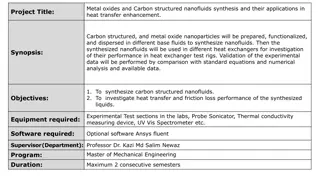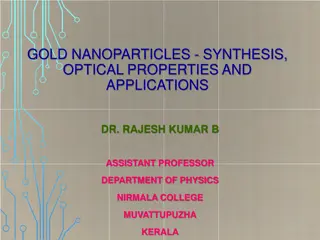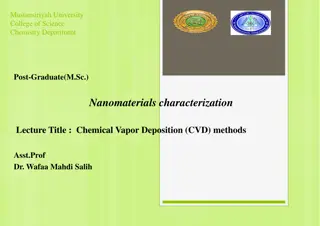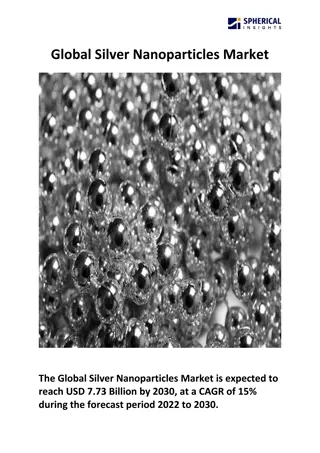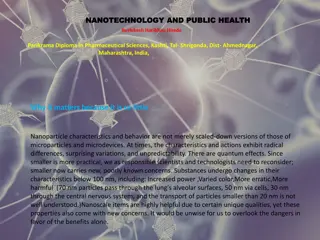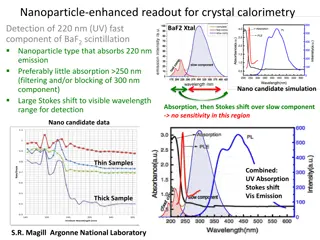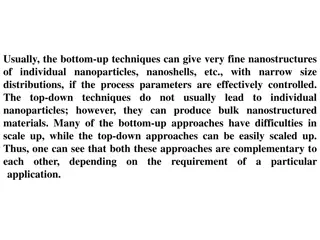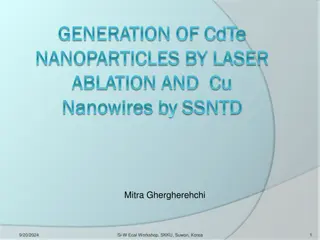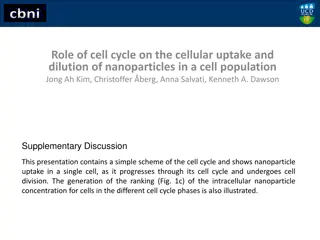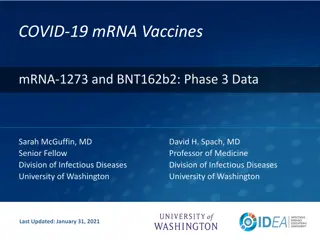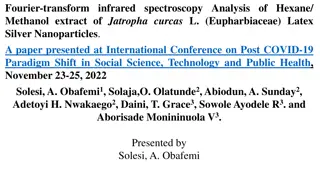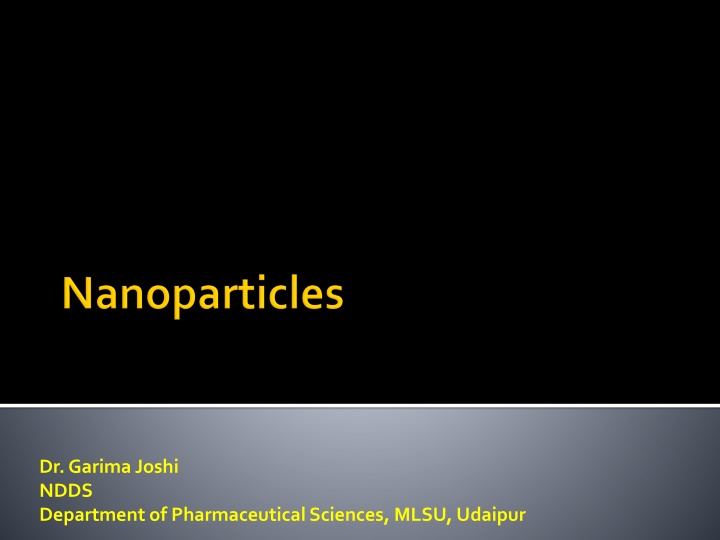
Nanoparticles in Drug Delivery: Concepts and Methods
Explore the world of nanoparticles in drug delivery systems, from their composition to selective localization for effective drug delivery. Discover how nanoparticles enhance drug delivery to specific targets, reducing side effects and improving drug efficacy. Learn about cross-linking and polymerization methods used in nanoparticle synthesis, along with parameters for their characterization.
Download Presentation

Please find below an Image/Link to download the presentation.
The content on the website is provided AS IS for your information and personal use only. It may not be sold, licensed, or shared on other websites without obtaining consent from the author. If you encounter any issues during the download, it is possible that the publisher has removed the file from their server.
You are allowed to download the files provided on this website for personal or commercial use, subject to the condition that they are used lawfully. All files are the property of their respective owners.
The content on the website is provided AS IS for your information and personal use only. It may not be sold, licensed, or shared on other websites without obtaining consent from the author.
E N D
Presentation Transcript
Dr. GarimaJoshi NDDS Department of Pharmaceutical Sciences, MLSU, Udaipur
Nanoparticles are subnanosizedcolloidal drug delivery systems Particle size ranges from 10-1000 nm in diameter. They are composed of synthetic or semi synthetic polymers carrying drugs or proteinaceoussubstances, i.e. antigen(s). Drugs are entrapped in the polymer matrix particulates or solid solutions or may be bound to particle surface by physical adsorption or in chemical form.
The basic Concept involved is : Selective and Effective Localization of pharmacologically active moiety at preselected target(s) in therapeutic concentration. Provided restriction of it s access to non- target normal tissues and cells. Nanoparticles are mainly taken by : Reticulo Endothelial System (RES), after the administration;
Hence are useful to carry drugs to the liver and to cells that are phagocytically active. By modifying the surface characteristics of the nanoparticles it is possible to enhance the delivery of drugs to spleen relative to the liver. Distribution of the nanoparticles in the body may be achieved possibly by : Coating of nanoparticles with certain components, such as polymers (synthetic or natural)
Reduction in the frequency of the dosages taken by the patient More uniform effect of the drug Reduction of drug Side Effects Reduced fluctuation in circulating drug levels Avoids hepatic first pass metabolism
A : Cross Linking Methods 1) By Cross- linking of AmphiphilicMacromolecules 2) By Crosslinking in W/O Emulsion 3) By Emulsion chemical dehydration 4) By Phase Separation 5) By pH induced Aggregation B : Polymerization Methods 1) Emulsion polymerization 2) Dispersion polymerization C : Polymer precipitation methods 1) Solvent evaporation 2) Solvent displacement 3) Salting out
PARAMETER METHOD 1) Particle size - Photon correlation spectroscopy - Laser defractometry- Scanning electron microscopy 2) Molecular weight -Gel Chromatography 3) Charge determination - Laser Doppler Anemometry - Zeta potentiometer 4) Density - Helium compression pynometry5) Crystallinity -X-ray diffraction & Differential scanning Calorimetry, Thermogravimetry6) Hydrophobicity- Hydrophobic interaction, Chromatography 7) Surface element analysis -X-ray, photon electron
1) Widely used in case of Cancer Therapy. 2) In lntracellularTargeting 3) Used for Prolonged Systemic Circulation. 4) As a Vaccine Adjuvant. 5) In Case of Ocular delivery. 6) Used in DNA Delivery. 7) It is used in case of Oligonucleotidedelivery. 8) Enzyme immunoassays 9) Radio-imaging. 10) To cross BBB.

